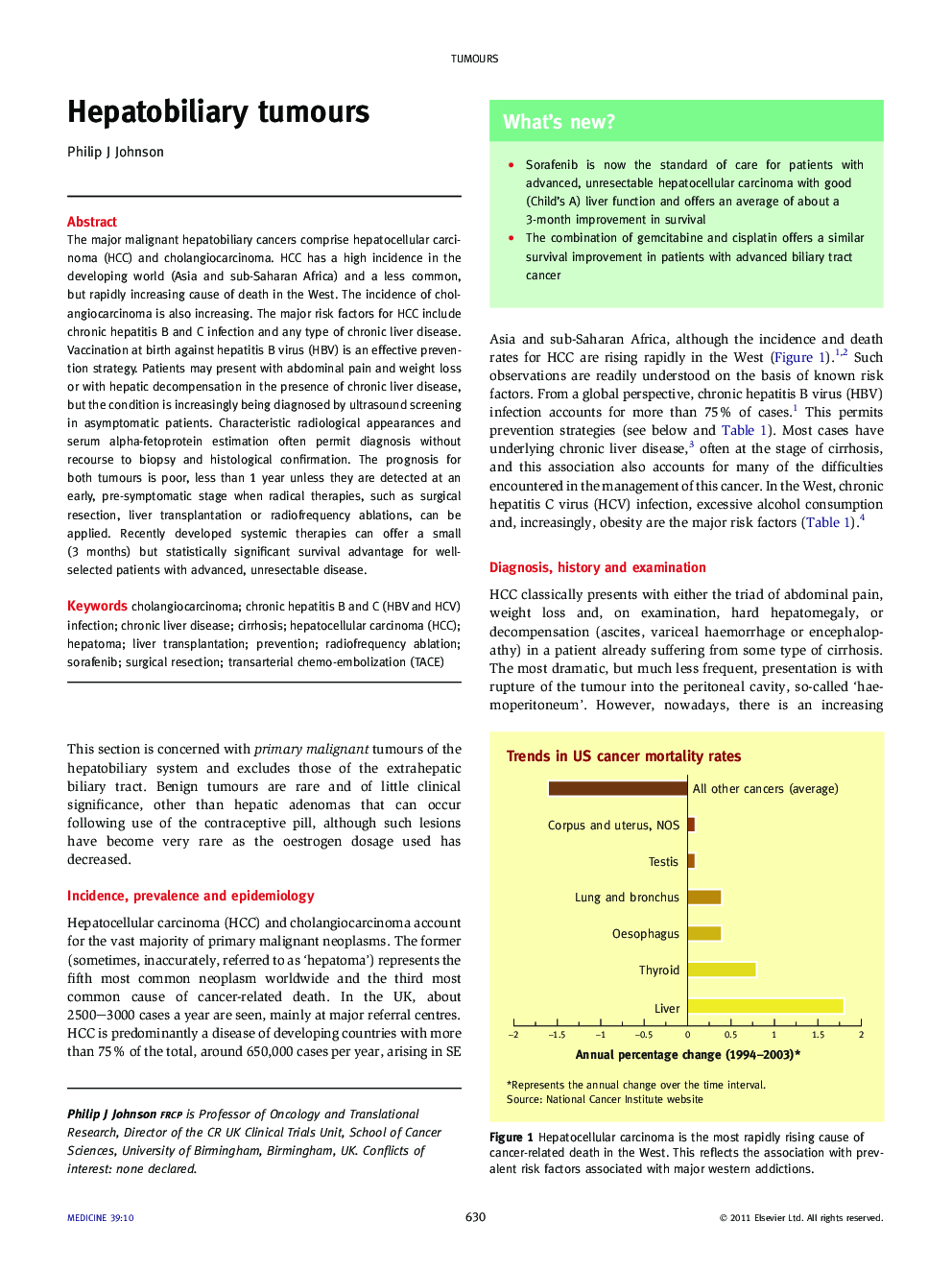| Article ID | Journal | Published Year | Pages | File Type |
|---|---|---|---|---|
| 3804856 | Medicine | 2011 | 4 Pages |
The major malignant hepatobiliary cancers comprise hepatocellular carcinoma (HCC) and cholangiocarcinoma. HCC has a high incidence in the developing world (Asia and sub-Saharan Africa) and a less common, but rapidly increasing cause of death in the West. The incidence of cholangiocarcinoma is also increasing. The major risk factors for HCC include chronic hepatitis B and C infection and any type of chronic liver disease. Vaccination at birth against hepatitis B virus (HBV) is an effective prevention strategy. Patients may present with abdominal pain and weight loss or with hepatic decompensation in the presence of chronic liver disease, but the condition is increasingly being diagnosed by ultrasound screening in asymptomatic patients. Characteristic radiological appearances and serum alpha-fetoprotein estimation often permit diagnosis without recourse to biopsy and histological confirmation. The prognosis for both tumours is poor, less than 1 year unless they are detected at an early, pre-symptomatic stage when radical therapies, such as surgical resection, liver transplantation or radiofrequency ablations, can be applied. Recently developed systemic therapies can offer a small (3 months) but statistically significant survival advantage for well-selected patients with advanced, unresectable disease.
